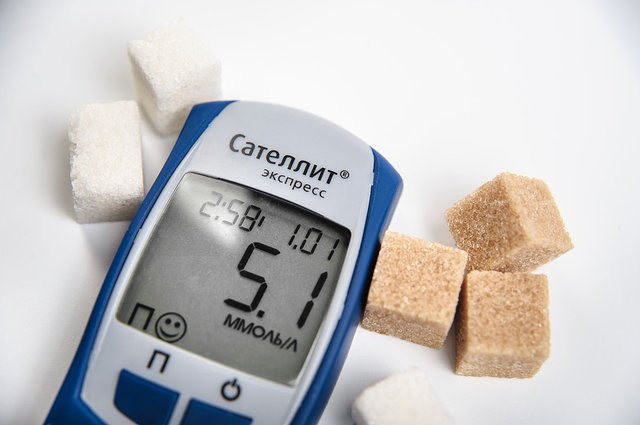The Key To Treat Diabetes; Prevention!

I think it is fairly known to everyone that diabetes mellitus is quite common among people around the world. One of the factors that influence your chance of getting diabetes is diet and although it sounds easy, eating right is one of the most difficult tasks to be achieved by the general population as it requires us to be aware and picky about what we were eating. At some point in your life you might have been exposed to any terms that have been used to describe diabetes mellitus and if you didn't quite know, diabetes mellitus is a collection of metabolic illnesses, which is characterised by a high concentration of blood glucose (hyperglycaemia) as a result of defects in either secretion or the action of insulin (which is a type of hormone that regulates blood sugar). There were a lot of complications presented with chronic diabetes mellitus and most of them were quite debilitating, reducing the quality of life and imposing a lot of financial burden on patients' long-term care.
There are a lot of pathophysiological theories that have been proposed to explain how people were affected by hyperglycaemia. Even though glucose is thought as one of the fuel sources which is essential to operate a human being, it can be quite damaging, especially if it combines with protein in a harmful process called glycation which could potentially accelerate the process of cells being damaged by oxidative stresses. The causes of diabetes mellitus were not quite simple; it ranges from insulin deficiency caused by an autoimmune destruction of the pancreatic cell to the reduction of cells' sensitivity towards insulin action. Most of the time, people have been associating poor diet, lack of exercise and poor sleep quality with diabetes mellitus but all of them usually account for a single cause of diabetes which is an increase in insulin-resistant causing a reduction in glucose uptake by the cells.

In a healthy individual, when there is a high concentration of glucose in the blood, the pancreas would secrete a hormone called insulin to facilitate glucose transport into the cell to be used as energy. This is achieved by the activation of a specific receptor on the cell surface membrane, triggering a vesicle-contained glucose transporter protein to be deployed. This transporter protein would aid the entry of glucose into the cell so that it can be used for various biochemical reactions in the body. It should be noted that not all of the organs which have been using glucose as energy need insulin as a mediator of the glucose uptake process. Brain and liver are two known organs which have been using glucose as energy but don't require insulin for the uptake process (the type of glucose transporter being used were non-insulin-dependent). In people who have been diagnosed with diabetes mellitus, there were some problems with one of the mechanisms that will allow the entry of glucose into the cell due to certain pathologies. Some people were predisposed to diabetes due to autoimmune causes which would reduce the concentration of insulin being produced to control blood glucose level. This type of patient usually will need exogenous insulin for the rest of their life. Most of the diabetes cases can be controlled by a strict diet, physical exercise and good sleeping habit.
5 Type of Diabetes

Yes, you read it right. 5, not 2. In a paper published earlier this year (1st of March 2018) by Ahlqvist E. et al entitled "Novel subgroups of adult-onset diabetes and their association with outcomes: a data-driven cluster analysis of six variables" has found that diabetes mellitus can be further divided into 5 clusters from the 2 types of diabetes mellitus. Previously, we were taught that there were two types of diabetes mellitus which are diabetes mellitus type I (insulin deficient) and diabetes mellitus type II (insulin resistance) but the study revealed 5 clusters of diabetes mellitus which can be derived from the 2. So is it 2 or 5? Well, in usual setting, the 2 were quite relevant to describe diabetes especially when it involves some form of communication between a doctor and a patient which requires understanding. People need to know whether their illnesses were caused by insulin deficiency or insulin resistant so that it can be sorted out by an appropriate management.
If we want to discuss the prognosis and some risks for diabetic patients developing certain complications, the 5 clusters of diabetes might have been more relevant. Cluster 1 and cluster 2 of diabetes mellitus were quite similar to diabetes mellitus type I and the rest, were type II:
- Diabetes Mellitus Cluster 1: This is an autoimmune form of diabetes mellitus. Pancreatic cells which have been responsible for producing insulin were destroyed by autoimmune attack hence the low concentration of insulin. People who were classified under this cluster were usually young and non-obese.
- Diabetes Mellitus Cluster 2: The presentation of signs and symptoms for people in this cluster resemble people in cluster one. They were usually young at the time of diagnosis and non-obese but the main difference is that there were no traces of autoantibodies to explain the low insulin level; cluster II is not caused by an autoimmune process. The pathology was thought to be originated from the pancreatic cells itself in terms of their population number or their capacity to produce insulin.
- Diabetes Mellitus Cluster 3: The concentration of insulin produced by the pancreas in people who were classified under this cluster ranges from normal to high. There was no abnormality in terms of the capacity of the pancreas to produce insulin but there is a higher degree of resistance among cells towards the insulin produced causing a great concentration of glucose to be retained in the circulating blood. People who were classified under this cluster were usually obese.
- Diabetes Mellitus Cluster 4: This is a milder form of diabetes mellitus cluster 3. There were few diabetic-related complications and the people who were classified under this cluster were usually obese.
- Diabetes Mellitus Cluster 5: This cluster of diabetes were similar to the cluster 4; the only difference is the age of diagnosis. People who were in cluster 5 were usually old which accounts for the most number of subjects in the study conducted by Ahlqvist E. et al.

There are numerous clinical benefits that could be attained by classifying patients into these 5 categories. Treatment modalities can be managed according to the different clusters taking into account the severity of symptoms and the risk of getting diabetic complications. For example, people who were in cluster 2 and 3 are prone to get diabetic-related complications such as nephropathy and retinopathy hence treatment should have been aggressive as they can be to prevent such complications from happening. People who were categorised under cluster 4 and 5 could be managed, primarily by lifestyle modifications instead of giving out medicine.
Prediabetes and Prevention

Having a high blood glucose in the systemic circulation with a normal pancreatic function/cellular tolerance to insulin (prediabetes) is one of the major problems faced by people globally. In the simplest term, these people are predisposed to develop diabetes hence complications related to it soon. In the United State of America (USA), among 80 million affected people who were estimated by the Centre for Disease Control and Prevention (CDC), approximately 90% of them are unaware they were affected, so they would keep on munching their high carbohydrate snacks while watching Netflix. It is reasonable to think that if people were having lack of awareness regarding their own pre-diabetes status, they wouldn't bother to stop doing what they were doing or start doing whatever they were supposed to be doing. The number of people who will progress to diabetes type II was between 15-20% out of the total number of people who were found to have an abnormally high blood glucose concentration in the blood but the criteria don't satisfy for them to be diagnosed as diabetes yet.
Prevention is an important and one of the most effective measures of reducing the incidence of people being affected by diabetic complications. It's kinda true for any diseases, if you can't deal with it, don't get it in the first place but sometimes, the factor which caused such disease makes getting it inevitable; people who were diagnosed with autoimmune diseases for example. Diabetes mellitus has been an important disease which could cause blindness, heart diseases, other related organs dysfunction etc. In 2011, the number of people who were diagnosed with diabetes mellitus increases by 12% concurrent with the increase in the rate of obesity. It was determined and confirmed by then that obesity is an important reversible factor which could have caused diabetes and it shouldn't be taken lightly. Even if diabetes mellitus type II were usually diagnosed among people who were overweight and obese, in Asia, there were a significant portion of the population being diagnosed while having a normal to underweight BMI. It's important to consider other factors as well to diagnose diabetes.
References: [1], [2], [3], [4], [5]
All pictures were taken from Pixabay
Image sources: [1], [2], [3], [4], [5]

Posted from my blog with SteemPress : http://n4zrizulkafli.com/index.php/2018/07/01/the-key-to-treat-diabetes-prevention/
Congratulations @n4zrizulkafli! You have completed the following achievement on Steemit and have been rewarded with new badge(s) :
Click on the badge to view your Board of Honor.
If you no longer want to receive notifications, reply to this comment with the word
STOPDo not miss the last post from @steemitboard:
SteemitBoard World Cup Contest - Russia vs Croatia
Participate in the SteemitBoard World Cup Contest!
Collect World Cup badges and win free SBD
Support the Gold Sponsors of the contest: @good-karma and @lukestokes